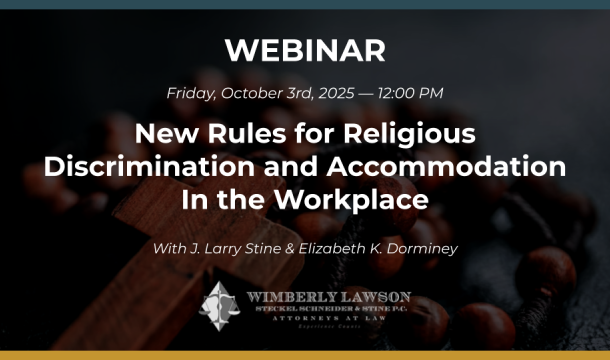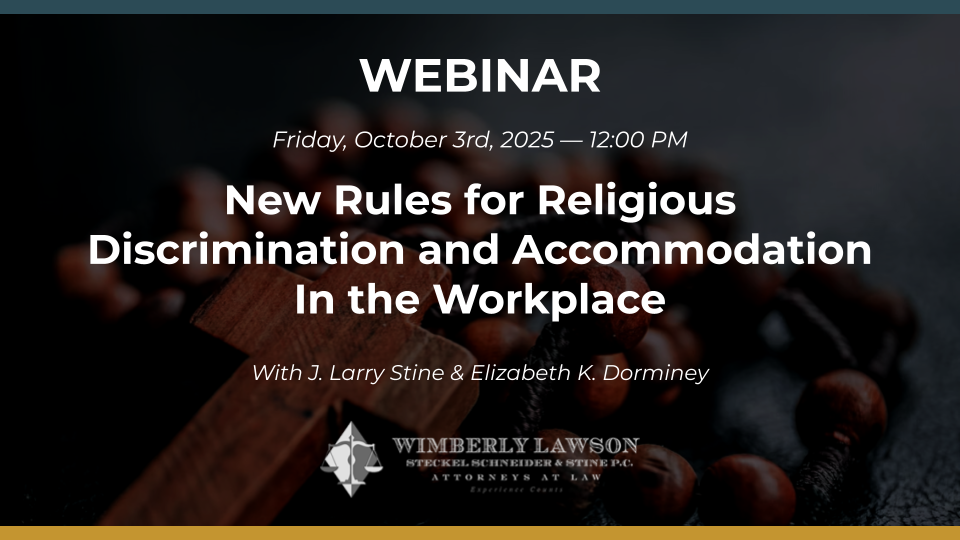Bullying vs. Harassment in the Workplace—What’s Actionable?
Picture the workplace bully: that manager that publicly humiliates any employee who makes a mistake at work, belittles any employee that dares talk back to him, and then storms down the hall bellowing "I'm in the mood to fire someone today!" He's bad for employee morale, but has he engaged in actionable harassment? If he focuses his bullying on a particular protected class of employees, such as women, people over 40, racial minorities, etc., then yes. But if he abuses everyone and anyone, regardless of gender, age, race, etc., then he is what we like to call an "equal opportunity harasser," and his behavior is probably not actionable under federal anti-harassment laws. That doesn't mean it should be tolerated, though. This kind of behavior is likely to contribute to high employee turnover and the loss of good employees. Moreover, such behavior is likely to upset employees so much that they may consult with an attorney and/or file a charge with the EEOC. While the charges and lawsuits that result from these actions may be legally defensible, they are still going to cost the company attorneys' fees and time to defend. The company's reputation may take a hit, too.
Similarly, if an employee abuses another employee simply out of personal spite or vindictiveness, it is not actionable harassment, at least in Texas. In Alamo Heights Indep. Sch. Dist. v. Clark (Tex. en banc, No. 16-0244, opinion issued April 6, 2018), the Texas Supreme Court ruled that the bullying and harassment of a female middle school coach by another female coach was not actionable harassment because it was not motivated by the plaintiff's gender. Though the bully made comments about plaintiff's body and sexuality and made the plaintiff's life miserable, the court said the comments were a result of personal dislike and vindictiveness and therefore, were not unlawful harassment. The employer won this case—but it had to litigate all the way to the Texas Supreme Court to do so.
Although there can be a legal distinction between bullying and actionable harassment, it is a distinction without a difference at the time an employee makes a complaint to the company about the behavior of another employee. As we have advised in the past, a company should never ignore an employee complaint of "harassment." A company should conduct some form of investigation in response to every complaint. If an employee has taken that step of using the company's complaint procedure, the company needs to show that it takes matters of harassment—and bullying-- of employees seriously. Otherwise, the company may be doomed to high employee turnover and expensive lawsuits.

Kathleen J. Jennings is a former principal in the Atlanta office of Wimberly, Lawson, Steckel, Schneider, & Stine, P.C. She defends employers in employment matters, such as sexual harassment, discrimination, Wage and Hour, OSHA, restrictive covenants, and other employment litigation and provides training and counseling to employers in employment matters.
Related Content
Get Email Updates
Recent Content

Trump Nominates Appointments to NLRB and EEOC but Policy Changes Likely to Be Delayed

DOL Launches Self-Audit Programs Designed to Help Employers Improve Compliance

DOL Must Release EEO-1 Reports to the Public under Open Records Laws

Current Advice on Active-Shooter Situations

New Policy for Federal Workers and Religious Expressions

